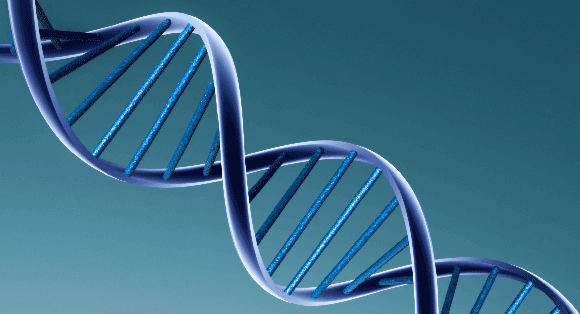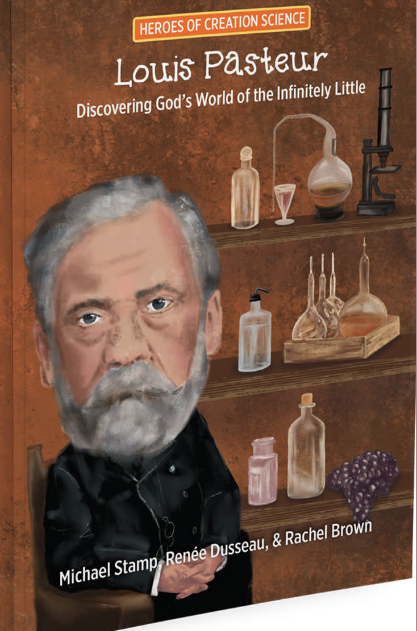Articles » Biochemistry
As a rule, scientists seek answers. They want to answer the “why” questions. Why, for example, are plants green? Why is blood red? These are very simple queries compared to the biggies like why does quantum physics work. Nevertheless, believe it or not , we are as far from answering why chlorophyll is green, and blood cells are red, as we are from explaining quantum mechanics. Two commentators in fact recently termed the reason blood is red a “visual pun of molecular wit.” (Morrison and Morrison. 1998. Scientific American. March p. 106) The explanation for colour in chlorophyll is similarly obscure. The situation becomes even more interesting when we discover that chlorophyll and the heme component of hemoglobin are chemically extremely similar . Read the rest of this entry »
Spiders look scary and with good reason. They are all predators, you know. Their eight hairy legs and alarming mouth parts would frighten any potential victim. Although the usual victims are insects, even most people are reluctant to get too close to these creatures. Nevertheless, despite their frightening appearance, spiders are actually wonderfully designed organisms. Many species effortlessly produce an amazing product — spider silk. For forty years, scientists working for the American military, have sought to produce something like spider silk. Apparently this material is, by weight, five times stronger than steel. the military would love to use it for bullet proof vests, for parachutes, tents and surgical dressings. Until very recently however, all that the scientists produced was useless blobs. The spider, on the other hand, turns special proteins into as many as seven kinds of silk. The best plan would have been to let the spider do all that for us as well as for herself. Spider farming would have been fine, except that these fierce predators ate each other up. So it was back to the drawing board. Read the rest of this entry »
Imagine that you had never seen a car or any automobile before. You might well be curious as to how the device is able to move. So you examine some vehicles in motion and you come to the obvious conclusion that the wheels are the agents of motion. This is all very obvious and all very true. However if you build a device with chassis and wheels only, you will not get very far. What a car requires is an engine manufactured in a factory and fuel to run the engine. Of course your car needs mechanics to maintain the engine too. It is immediately evident to you that the whole system is the result of designers who conceived of the whole idea and who specify how your car is to be manufactured and operated. Read the rest of this entry »
Did you ever stop to think about water? That most precious of resources, is an amazing compound. Indeed, as we all know, without this commodity, there is no life. Read the rest of this entry »
When I was 19, I had a summer job in a hospital laboratory in Sherbrooke, Quebec. The hospital was fairly small, as it served an English community of perhaps 20,000 to 30,000 people in the extended region. Read the rest of this entry »
Some people like a good challenge and some don’t. Some people like the challenge of climbing Mount Everest, while others would prefer to stay home. Such people might point out that there are some challenges which are best ignored. There could well be challenges which are just too difficult or time consuming to undertake. For example, in August a team from Cambridge University reported that it took them twenty two years to produce a synthetic version of azadirachtin, a product which India’s neem tree (Azadirachta indica) effortlessly produces in large quantities. Read the rest of this entry »
The scientist credited with developing a new type of stem cell, says he is very concerned about the process. The ethical problems go far beyond any issues with embryonic stem cells. Read the rest of this entry »
An avid fan of spy stories, I have read many which involve an apparently harmless document (like a friendly letter). But the document actually conveys dangerous information if one is provided with the appropriate convention for decoding it. Read the rest of this entry »
Anybody studying biology today is aware that proteins form the molecular machines that keep the cells of our bodies healthy. But how many students are told that these proteins are actually beautiful? Read the rest of this entry »
CSAA’s featured speaker for Creation Weekend 2011 was well known creation apologist Dr. Jerry Bergman. Large numbers of people came to hear one or more of his lectures and all declared themselves delighted with his genial, non-confrontational manner and his interesting material. In that Dr. Bergman’s area of expertise is biology, chemistry and medical anatomy, the issues he discussed were quite different from the geological topics which we have considered in recent years. This material demonstrated anew that the issue of creation is broad and encompasses all aspects of nature. Read the rest of this entry »
If bats were prettier to look at, we might appreciate their amazing talents more. The fact is that bats exhibit some astonishing design features which our engineers and technologists really envy. Traditionally scientists have grouped bats according to their food preferences. There are the fruit bats with good eyesight, the insect consuming, echolocating bats and the vampire or blood consuming bats. Further research has revealed how amazingly these animals are designed for their life styles. Such studies have also revealed that the old fashioned ways of categorizing the creatures according to lifestyle and physical appearance do not really work. This has had some serious implications for ideas concerning whether Darwinian evolution could ever work or not. Read the rest of this entry »
It is interesting how dinosaur artifacts continue to amaze us. For example, in 1961, petroleum geologist R. L. Liscomb discovered a large bone bed on the banks of the Colville River in Alaska, not far from the Arctic Ocean. Since the bones were not perminieralized (fossilized), he assumed they were recent bison bones. He deposited some in a museum and for twenty years nobody gave the bones another thought. Then somebody noticed that these were Edmontosaurus bones (duckbill dinosaur). In 1985 palaeontologist William A. Clemens reported abundant dinosaur bones at the Liscomb site and in 1987 associate Kyle L. Davies described the condition of the dinosaur bones: “The quality of preservation is remarkable. The bones are stained a dark red brown but otherwise display little permineralization, crushing or distortion.” (J. Paleontology 61 #1 p. 198). Could such bones really be millions of years old as many scientists now supposed?
You have to wonder how a big science project in biology, which involved 32 laboratories from 10 countries and 440 scientists, and which cost $130 million, could be controversial with many other mainstream biologists. The lead articles were published in the journal Nature on September 6, 2012. What could be controversial about that? Well it transpires that many scientists, who were not involved, did not like the initial thinking on which the project was based, how the research was carried out, and how the conclusions were drawn. What certain mainstream scientists particularly did not like was that so many intelligent design and creation scientists were so pleased. Read the rest of this entry »
Over the last decade, everything has become digital. We don’t capture images on film anymore, but in digital files. We don’t send letters, we send email messages. We don’t buy books, we download documents to an e-reader. Every organization has a website. Information is at our fingertips, but the whole system is extremely fragile.
The problems with our digital storage technologies are twofold. The data don’t last once they have been laid down and must be transferred to keep them fresh, while the technology for storage and reading keeps changing. An amusing example of this is NASA, which in the early 2000s, found that it was unable to access data from the space program of the 1960s and 1970s. So there they were, scouring internet auction sites to find second hand eight-inch floppy drives which could read their priceless data. Similar events of loss or near loss happen all the time. In 2009 when Yahoo! closed their GeoCities server, a huge amount of data was lost, perhaps “the most amount of history in the shortest amount of time, certainly on purpose, in living memory.” Nobody seemed to notice, but if these had been paper documents which were lost from a library, the outcry would have been anguished indeed. The take home lesson is that as a digital society, we need better systems to store and read data. In view of this, some scientists have turned their attention not to a new system, but to a tried and true system, much better than modern devices. Enter DNA to the discussion. Read the rest of this entry »
Dr. Paul Nelson is a prominent spokesperson for the creation and intelligent design communities. It was in that capacity that he introduced enthusiastic participants at the 2013 Creation Weekend in Edmonton, to new arguments and exciting information. Read the rest of this entry »







